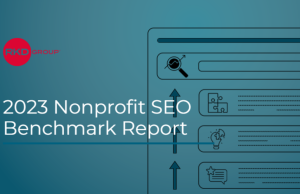The years 1999 and 2000 were exciting times in nonprofit technology. Three firms were launched that became household names in nonprofit constituent management (CRM) systems and fundraising – Convio, GetActive and Kintera.
The competition for investment dollars and clients was fierce. The three firms received tens of millions of dollars in private equity funding and investment. Kintera and Convio even went public.
Leadership at the organizations appeared to agree on just one thing – they would never sell to the largest firm in the space – Blackbaud, where the CRM system was having issues, according to tech experts.
The skirmishes also had humorous moments. There was the time that the Convio marketing team rented all of the rickshaws in Charleston, S.C., during Blackbaud’s annual user conference and put Convio advertising on them. They paid the drivers to wear Convio T-shirts. The marketing people also rented a truck with an electronic billboard touting a Convio product and parked it in front of the event site, which Blackbaud staff tried to have towed.
The battle was unsustainable. Fast forward to 2007. GetActive was purchased by Convio for an undisclosed sum. Blackbaud acquired Kintera for $46 million in June 2008. Then in 2012, Blackbaud paid $275 million for Convio. The Kintera and Convio deals were worth $415 million in today’s money.
All three product names are distant memories and Blackbaud remains a public company with a recent market cap of $3.4 billion on reported revenue of $922.4 million.
This trip down memory lane might give perspective to the hottest 10-day period in nonprofit tech last month with three deals that industry insiders say might be worth north of $4 billion.
First, Blackbaud announced it would spend $750 million in cash and stock to purchase EVERFI, a corporate social impact platform. The next day it was announced that Network for Good had been purchased by the umbrella corporation that owns EveryAction, Social Solutions and CyberGrants. Terms of the deal were not disclosed. Then came the acquisition of platform Classy by GoFundMe in an all equity deal.
The Network for Good acquisition was backed by venture and investment firm Apax Partners LLP, which invests in companies across four global sectors of technology, services, healthcare, and Internet/consumer. Insight Partners has also been busy investing in nonprofit-focused technology the past few years, including EveryAction, Community Brands and hivebrite. Vista Equity Partners is involved with the EveryAction umbrella and also backed MicroEdge, a tech firm in the nonprofit space.
While the most recent deals are of big names in the nonprofit space, small firms with just a few employees are getting into the nonprofit silo for the same reason the venture money is getting in — recurring annual revenue, i.e., a percentage of donations, and to build up enough clients to be purchased by one of the larger firms.
“The sale of Benevity for $1.1 billion in 2020 sent off a huge signal to private equity firms; there’s money in philanthropy tech. The incredibly fractionalized nonprofit tech software market has been quiet for a while and now the pendulum is swinging toward consolidation,” said George Weiner, who heads nonprofit tech consultancy Whole Whale.
“The Blackbaud one-stop-shop drove $934 million in revenue in 2020, proving there is a need and money to be made from aggregating SaaS (software as a service) solutions in the nonprofit sector,” said Weiner. “Large private equity firms that invest in SaaS have taken notice and we anticipate a lot more merger announcements to come. One upside for nonprofits might be lower prices in the near term and actual answers to consolidating their donor CRM and communication needs.”
Not everyone loves the anticipated action. “Talk of product synergy always accompanies such merger announcements. I’ve never met a nonprofit person who said the barrier to meeting their mission was that their technology products weren’t all owned by the same company,” said Amy Sample Ward, CEO of nonprofit tech association NTEN in Portland, Ore.
“The idea that VCs (venture capital firms) and major technology providers are doing nonprofits a favor by acquiring a number of products under one umbrella is simply a marketing tactic,” said Ward, who co-authored with Afua Bruce the new book “The Tech That Comes Next: How Changemakers, Philanthropists, and Technologists Can Build an Equitable World.”
“What nonprofits and communities need is accountability to their real needs and use cases from the product providers, roadmaps that are transparent and prioritize improved use for impact instead of sellable add-ons, and opportunities to own and even profit from their own solutions,” said Ward.
Tad Druart was the marketing director at Convio during the rickshaw prank. He believes the investment and competition wasn’t necessarily a bad thing. The competition put nonprofit technology on the radar of investment firms.
“That competition, nonprofits were better for it. There were better tools, better systems and over time it forced other firms to up their games and be more customer centered,” said Druart.
Una Osili, Ph.D., is an economist and associate dean for Research and International Programs at the Lilly Family School of Philanthropy at Indiana University in Indianapolis, Ind. She is seeing quite a bit of competition at smaller firms, particularly those in very specific areas of charity, such as Muslim giving. The challenge, she said, is that the platforms have two consumers: the donors who give through the CRMs and the nonprofits.
“Smaller tech firms don’t have the surplus revenue,” to accumulate research and enhance products that the larger firms can either develop or buy. “The question is what is the right number of players. It is early to assess,” Osili said. Until a broader shakeout, fundraisers “must push for transparency and accountability,” she said.
The transparency extends to fees. While there are fees for the software, most of the firms get a piece of donations through transaction fees that range from less than 1% to more than 5%. Fees will vary based on volume and a fundraiser’s ability to negotiate a lower rate.
Let’s say a large CRM provider’s transaction fee is 2% on top of any software configuration and customization costs. If that firm handles $100 million (a low number) the fees would be $2 million for simply processing the transaction. Classy reported that nonprofits raised $1.1 billion while using its system during 2021. If a platform firm charged 2% on that level of transactions, it would mean $22 million.
The investment dollars early on “showed the world that the nonprofit sector is legitimate. The capital flowing now has more understanding of the need and the role of nonprofits, said Druart.
“It has been fun to watch private equity markets turn investments toward nonprofit tech as they realize the financial power of the nonprofit sector which employs 10% of the U.S. labor force,” said Weiner.
Sample Ward has a different view. “If we are doing our work to the fullest of our missions, we should be going out of business and our communities and world should see real and systemic change that allows us to thrive together,” she said. “Thinking about our technology solutions with that same lens means we want technology providers who are prepared to be long-term partners committed to impact over sales, social change over data mining, and even going out of business with us in a better world.”









